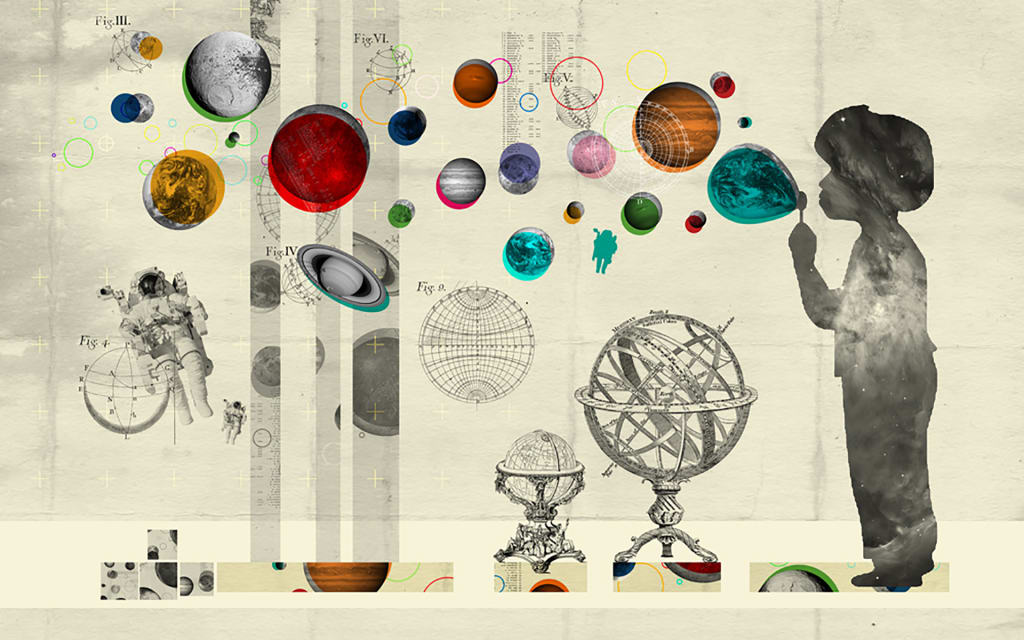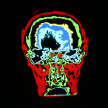Best Vintage Astronomy Books
Vintage astronomy books are must-haves for the budding astronomer, the space know-it-all, and everyone in between.

The 20th century was an amazing time for space exploration. Astronomers were learning more about our solar system every day, while the manned missions to space were revealing galaxies of information. From this great age of exploration came some of the best books about astronomy. Now deemed vintage, these books are chock full of predictions, fears, facts, and failures from the astronomers and authors of the time. Ranging from literature about our home planet in Heinz Haber's Our Blue Planet, to predictions by Reginald Turnhill for space exploration in the 80s and 90s in Space Age, there is a great deal of material to be examined. People were talking about colonies in space in the 80s, and this idea may be found in James Trefil's Living in Space. From astronomy books for beginners to volumes for experts to pour over, the best vintage astronomy books should be on everyone's bookshelves.
Over 200 years ago, Charles Messier began his list of objects for comet-seekers to avoid. Today, amateur astronomers look for these heavenly objects, which are among the most interesting to observe. The photos, drawings, and maps for each of the 110 Messier objects in this book will help you locate many (with a small refractor or binoculars) or all (with a four to six inch reflector) of them. Also included in The Messier Album are 32 full color photos, including M31 (the Andromeda Galaxy) and M51 (the Whirlpool Galaxy).
Here's a fine introduction to the wide universe of astronomy. Take time to wonder about the vast universe that glitters in the night sky. Then take a tour of the Sun and its family of planets. Farther out are the stars living and dying in the emptiness beyond the Solar System. Next, explore the mystery of quasars and black holes. Finally, return to Earth to learn about the yearly motions of the constellations. Can you contain the universe in one album? No, but Album of Astronomy is a great vintage astronomy book to use to start your explorations!
Humanity has entered a new age—the Space Age. Space Age by Reginald Turnhill was written in 1980, and it predicts the possibilities for space in the 80s and 90s. What does the Shuttle mean for human life in space? What are our plans for space in the next 20 years? How have we gotten this far? How far can we go? Space Age looks at the new exploration as it was, is, will be, and can be. Read about space colonies, asteroid mining, space adventures, and space wars. Did these possibilities and dangers of the space age come to fruition? You'll have to read this vintage astronomy book to find out!
How old is the Earth? How was it formed? How did life develop? How is it changing? Here is the story of our home planet, its atmosphere, oceans, climate—its past, present, and future. Physicist Heinz Haber, author of 1971's Our Blue Planet, set a precedent for later space exploration advocates and physicists.
“What are we made of?” “Why is a rock different from an eyeball?” “Why doesn't all the hydrogen on Earth turn on and turn us all into a flaming star?” “Are all the stars the same?” “How old is the Sun, really?" “Wouldn't it be nice if all those beer cans were invisible?” Surprisingly, all these questions are related. And they're all answered in The History of Atoms and Stars! David Fisher leads us through one of the greatest detective puzzles in the history of science. From the insides of atoms to the insides of stars, you'll follow the path to the amazing discovery that everything—including humans—is comprised of “star stuff.” This may not be the easiest book you'll ever read, but The Creation of Atoms and Stars is entertaining and amusing—and it tells a fascinating story!
The Prentice-Hall Concise Book of Astronomy is a beautiful introduction to the night sky. The book begins with an exploration of Earth's atmosphere. Next, you'll leave Earth to investigate our Solar System. The authors then take you to the interstellar regions, where you'll learn about the life and death of stars. Going further still, you'll examine the Milky Way and other galaxies. The book finishes up with exploding galaxies, the quasar mystery, and the origin of the universe. The beautiful pictures and excellent diagrams show the universe of beauty and excitement that astronomy reveals.
The world of science is always interesting—and sometimes mysterious and exciting! Fantastic Journeys takes you to the frontiers of science, from the center of the Earth to the center of the atom—then out to the far reaches of space! Exciting new discoveries are uncovered about the puzzles of earth sciences, the fascinating world of subatomic physics, and the tantalizing clues about the beginning of the universe. Read about antimatter, black holes, radio astronomy, and the fate of the universe!
Humanity has reached an amazing threshold: We now have within our grasp the tools and know-how to create space colonies. Living in Space, written in 1981, is a level-headed examination of the possibilities regarding extraterrestrial building. The book is divided into three sections. “Building the Colony” describes the basic problems of living outside our natural habitat along with the practical solutions already designed. “Life in the Colony” shows what life in a space colony would be like, including the day of a typical space-family. “After the First Colony” takes a sweeping look at the ways in which humanity might spread from near-Earth space cities to the colonization of our galaxy! Do you dream about life in space? Living in Space shares your dream!
Here is an excellent introduction to the strange world of Relativity. Necia Apfel explains the universe of space-time revealed by Albert Einstein in It's All Relative. Use Einstein's method of “thought experiments” to learn about time dilation, gravitation and acceleration, the “bending” of light, black holes, the red shift, and the shape of the universe. You will also learn the “new language” of Relativity. It's All Relative is an absolutely terrific vintage astronomy book about Relativity.
About the Creator
Futurism Staff
A team of space cadets making the most out of their time trapped on Earth. Help.






Comments
There are no comments for this story
Be the first to respond and start the conversation.